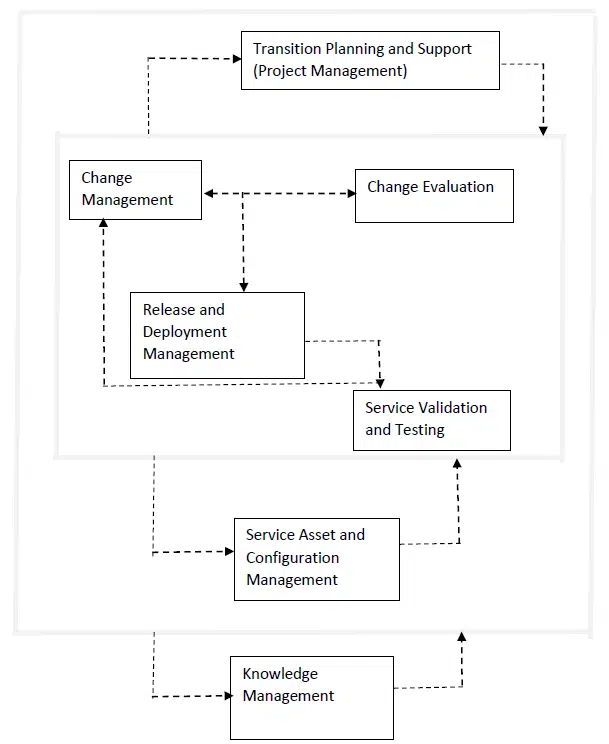04.26.2024
Your Complete Guide To Scaled Agile Framework Certification

Posted by Marbenz Antonio on June 7, 2023

The ITIL Service Transition stage plays a critical role in efficiently introducing new service designs and changes into operations. Its primary aim is to ensure that these modifications align with the business’s expectations.
During this phase of the ITIL service lifecycle, the focus is on constructing and implementing IT services based on the designs. This approach allows for flexibility in handling modifications, failures, and other unforeseen circumstances that may arise during the deployment of the services.
The ITIL service lifecycle consists of five stages, and the third stage is known as the Service Transition. The stages are outlined below:
In this article, we will explore the intricacies of the ITIL Service Transition stage.
The ITIL Service Transition stage holds immense importance as it ensures the seamless coordination of all changes made to services and service management processes. Its effectiveness lies in leveraging the Service Knowledge Management System (SKMS) to guarantee the smooth operation of services, ultimately determining the overall success of the service lifecycle.
This important stage focuses on harnessing the power of both new and existing services to drive impactful outcomes and enhance the organizational knowledge base. By meticulously managing the transition of services into operation, the ITIL Service Transition stage plays a vital role in ensuring consistent and efficient service delivery that aligns with the business requirements.
Want to know more about ITIL? Visit our course now.
The objectives and scope of ITIL Service Transition can be defined as follows:
The ITIL Service Transition stage encompasses various significant tasks, which include release planning, development, analysis, and implementation of capabilities to smoothly transition new and modified services into a well-supported environment. This stage also considers service retirement and transfers between service providers.
By meticulously overseeing these activities, the ITIL Service Transition stage plays a pivotal role in ensuring consistent and efficient service delivery that aligns with the business requirements.
The smooth transition of an IT service is of utmost importance in meeting the requirements of end-users. Within the ITIL Service Transition process, the following vital tasks are essential to ensure efficient transition planning and support:
The processes within the knowledge management areas of service transition are outlined as follows:
The flowchart illustrating the aforementioned processes is provided below:

The ITIL Service Transition process involves a dynamic exchange between change management and change evaluation, with valuable feedback from release and deployment management. It is crucial to prioritize changes that align with the business requirements during transition planning.
Knowledge management plays a pivotal role in supporting all aspects of the service transition process. Similarly, service asset and configuration management exclusively contribute to ITIL Service Transition, enhancing cost estimations, service timelines, resource requirements, and risk assessments during implementation. This proactive approach helps minimize delays caused by unforeseen conflicts and dependencies.
A well-executed service transition enhances confidence in the value and stability of new or modified services, ensuring their ease of maintenance and long-term cost-effectiveness. Additionally, a thoughtfully crafted service transition strategy empowers better control over existing service assets and configurations, leading to improved overall management.
ITIL Service Transition plays a pivotal role in guaranteeing the implementation of changes to IT services within a standardized framework and established processes. Concurrently, it ensures the smooth execution of package releases as per the predetermined plans. This approach serves as a quality assurance mechanism for newly introduced or modified services, enhancing overall quality throughout the transition process.
By strictly adhering to the prescribed processes and knowledge management areas, service providers can effectively address challenges and manage risks associated with the transition. Through the implementation of a comprehensive service transition strategy, organizations can ensure that their services align with business requirements and are delivered with utmost efficiency and effectiveness.
Here at CourseMonster, we know how hard it may be to find the right time and funds for training. We provide effective training programs that enable you to select the training option that best meets the demands of your company.
For more information, please get in touch with one of our course advisers today or contact us at training@coursemonster.com
